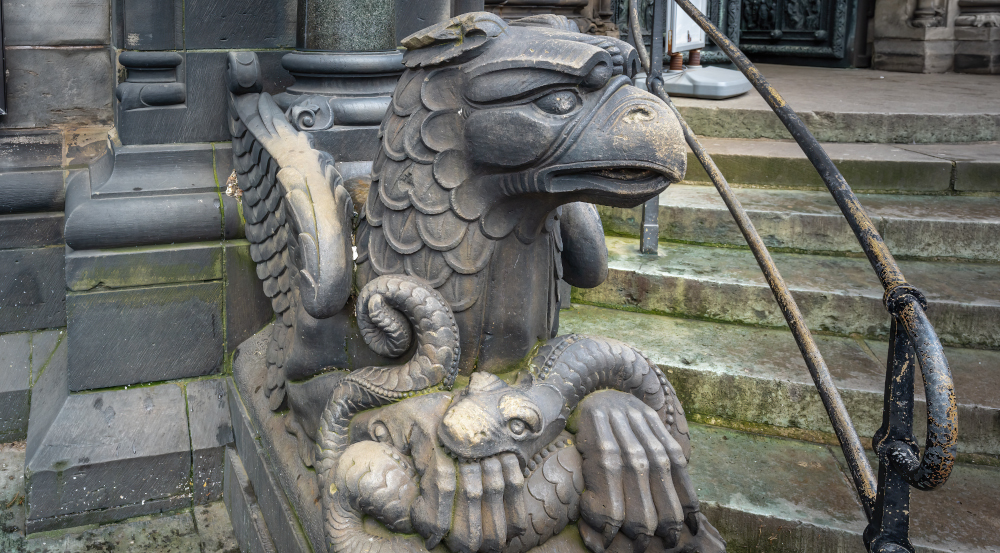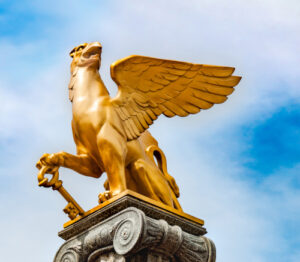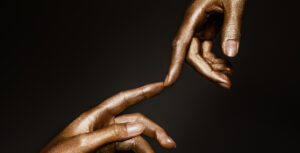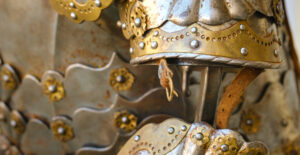
There’s something primal and magnetic about a creature that fuses the two most dominant predators of sky and land, the eagle and the lion. The griffin, with its sharp-beaked head, wide wingspan, and leonine body, is more than a composite beast. It’s a symbol, a metaphor, a warning, and a myth that has clawed its way through millennia without losing an ounce of mystique.
Long before dragons breathed fire in medieval fables or unicorns pranced through Renaissance tapestries, the griffin ruled the oldest corners of human imagination. It stood at the gate between worlds, guarding treasure, enforcing silence, promising glory, and delivering punishment. It wasn’t a creature you spotted by chance. It found you only if you were greedy, lost, or chosen.
In the ancient world, especially across Mesopotamia, Egypt, and Persia, griffins appeared not as background decor but as figures of immense power. You’d find them carved into stone reliefs or pressed into clay seals, almost always in a position of dominance. These weren’t friendly beasts. They were warriors and sentinels. Where the lion ruled the earth and the eagle the sky, the griffin reigned over boundaries, between life and death, fortune and ruin, the sacred and the stolen.
Greek mythology sharpened the creature’s edges. The griffin took on a more defined role, becoming the tireless guardian of gold hidden in distant mountains. The Greeks placed them in the Rhipaean range, a mythical frontier at the edge of the known world, and tasked them with protecting veins of raw treasure from one-eyed invaders known as the Arimaspians. These weren’t just wild tales told over fire. They were anchored in fear and awe, rooted in a belief that some wealth was not meant for mortal hands, and that something had to watch over it.
But where did such a creature come from? Some scholars once speculated that griffin legends may have emerged from real-world fossil discoveries. In the deserts of Central Asia, nomadic gold hunters may have stumbled upon Protoceratops skeletons, beaked dinosaurs buried in red sand. The bones suggested a beaked creature with four legs, a body unlike anything living, and a mysterious presence. From that spark, imagination might have ignited.
Yet others argue that the griffin existed in myth and art long before any fossils were unearthed. Its presence in Middle Bronze Age cylinder seals and Anatolian sculpture suggests a deeper origin, a human desire to merge symbols of strength into one form. The eagle’s vision and divine height. The lion’s courage and earthly dominance. The griffin was not born from bones. It was born from belief.
In time, the griffin’s image migrated. The ancient Greeks adopted it as a companion to gods. Apollo, god of light and prophecy, was often depicted riding a griffin, a creature of clarity and vigilance. Dionysus, the god of chaos and ecstasy, sometimes shared that iconography, as if to show that even the wild needed a watcher. The griffin wasn’t neutral. It had its own will, its own terms. You could ride it if you were divine. If not, you’d best keep your distance.
As centuries rolled forward, the griffin grew wings in every sense. In medieval Europe, it transformed from a mythological beast into a spiritual symbol. The Church saw in it a perfect analogy, half earthly lion, half heavenly eagle. It became a stand-in for Christ’s dual nature. Churches were adorned with its likeness, particularly at the corners of spires or the ends of pews, silently reminding congregants of the balance between power and grace.
Griffins also soared into the world of heraldry. They became family crests, insignias of noble houses, guardians of reputation and legacy. A griffin on your banner didn’t just mean you were strong. It meant you were watchful, honorable, and ready to defend what mattered. Later, universities, banks, and even countries adopted griffins as logos, continuing the creature’s long tradition as a symbol of protection and integrity.
 But the griffin wasn’t all dignity and devotion. It carried with it rumors of talismans, magical claws that could detect poison, feathers that healed wounds, and eggs that hatched gems. These legends added a layer of allure, drawing in traders and thieves, monks and magicians, each hoping to harness the beast’s invisible power. None succeeded. The griffin, like all great myths, always stayed just out of reach.
But the griffin wasn’t all dignity and devotion. It carried with it rumors of talismans, magical claws that could detect poison, feathers that healed wounds, and eggs that hatched gems. These legends added a layer of allure, drawing in traders and thieves, monks and magicians, each hoping to harness the beast’s invisible power. None succeeded. The griffin, like all great myths, always stayed just out of reach.
Modern literature and pop culture have not left it behind. From fantasy series to video games, griffins remain popular, but they’ve also become more complex. Sometimes noble, sometimes savage, sometimes misunderstood. They ride the line between beast and symbol, remaining exactly what they’ve always been, guardians of thresholds.
What makes the griffin endure isn’t just its appearance, but what it represents. In a world that constantly redraws its moral maps, the griffin remains fixed. It watches the line between want and need. It challenges greed, protects purity, and rewards only the worthy. In myth, it guards treasure. In life, it reminds us to ask whether what we seek is worth the risk.
Some creatures of legend fade with time. Their meanings grow stale. Their forms become caricature. But the griffin doesn’t fade. It sharpens. Maybe because every era needs something like it, a fierce reminder that some riches cannot be taken, only earned. That not all gates open. That some lines, if crossed, come with claws.
So the next time you see a griffin perched silently atop a monument, drawn into a crest, or soaring across a fantasy page, look closer. It isn’t just a mythical hybrid. It’s the memory of our oldest fears and highest hopes. It’s the animal shape of trust and warning. It is, and always will be, the creature waiting between your desire and its price.



